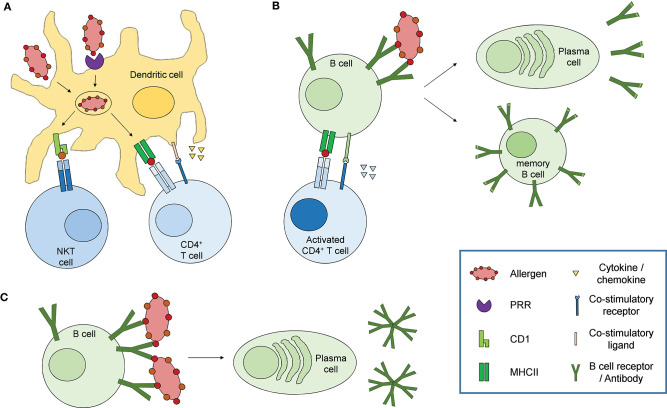Figure 4.
Immune response to carbohydrate antigens. (A) Dendritic cells sense carbohydrate constituents on allergens via pathogen recognition receptors (PRR) such as C-type lectin receptors, leading to their activation. Allergens are taken up by receptor mediated endocytosis or phagocytosis, processed and presented on MHCII (glycoproteins, defined polysaccharides) or CD1 (glycolipids) to specifically activate CD4+ T cells or NKT cells, respectively. Activated dendritic cells additionally secrete different cytokines and chemokines and express co-stimulatory molecules which initiate and modulate the adaptive immune response. (B) Activated CD4+ T cells in turn activate naïve B cells recognizing and presenting the same allergen on MHCII via co-stimulatory signals and secretion of specific cytokines resulting in affinity maturation, class switch recombination, memory B cell and plasma cell differentiation and antibody secretion. (C) Specific B cell subsets, mainly B1 cells, can be activated in a T cell independent fashion via extensive cross-linking of the B cell receptors by repetitive epitopes, resulting in the secretion of so-called natural antibodies characterized by only low antigen affinity and mainly IgM isotype.

